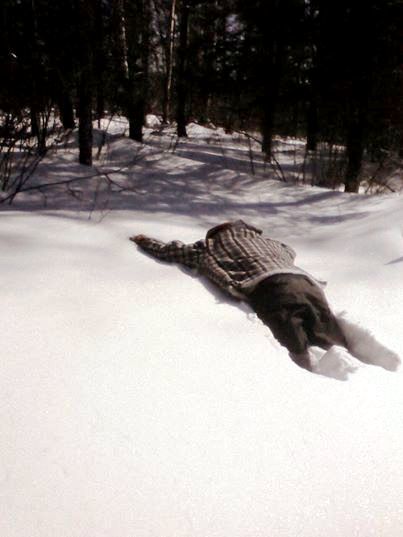What are these pancakes on my feet and why do I need them?: A Southerner’s guide to snowshoes


By: Bryan Goldner
Photo credits: Samantha Palmer

I found myself buried in snow somewhere between “I think I can climb out” and “Maybe they’ll find me in a couple days”. As I lay there, it seemed to me that I was going about this whole walking in the snow business all wrong. The snowshoe is a foreign concept to those of us from the Southeastern U.S. For thousands of years however, the snowshoe represented the pinnacle of technology for traversing frozen landscapes. It was only logical then, that I should become proficient in the use of these vehicles if I had any intention of surviving Minnesota. So with a little trial and quite a bit of error I was able to devise a few tips for those with a more temperate disposition.
1.) Overconfidence is the enemy.
It can be easy to get caught up in the exhilarating feeling of walking over snow like Eskimo Jesus, but don’t let it go to your head. Traipsing around in the forest for a couple days does not make you an expert. Overconfidence sows the seeds of carelessness and carelessness invariably leads to error.
2.) Never, ever, ever, walk backwards.
Like most primitive vehicles, snowshoes have no reverse. There is nothing more futile than trying to walk backwards while wearing a pair. If you decide that you must walk backwards for whatever reason, be prepared to become one with the snow. As a note, while only a slight extension of your normal standing base, snowshoes miraculously have the turning radius of a school bus.
3.) Your greatest natural hazard is a minute sapling stump.
Never has a tiny tree been a greater threat to your well-being than the moment you strap on a pair of snowshoes. They lay in wait, hidden just under the surface of the snow. Then, like ninjas of the forest, they strike at your heels. If you get caught by one, may the gods have mercy on your soul. Your only means of escape from the deadly grasp of a sapling stump is to leave your shoe to the wolves…at least you have one left.
4.) Downhill slopes turn snowshoes into skis.
If you are working on steep terrain you may as well enjoy the slopes because traction will be a thing of the past. Don’t worry though, if you are wearing all of your personal protective equipment you should be able to take a considerable amount of damage without serious injury. Oh, and always remember, when in doubt pizza… french fry… pizza… french fry.
Working in the snow makes almost every task more difficult, but snowshoes make these tasks difficult in a different, less terrible way. Despite their shortcomings, snowshoes give you an incredible amount of access to the wilderness and allow you to see places and scenery that are seldom seen by others. When you are standing over a frozen lake, far from the world, listening to the sound of snowflakes accumulate you’ll thank someone that you had snowshoes to make the trip.